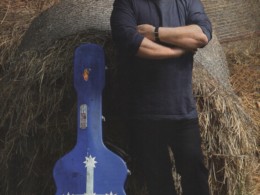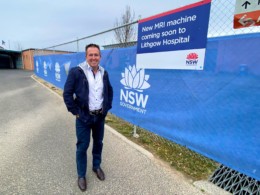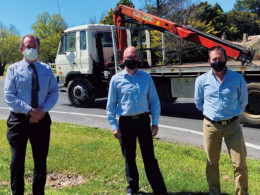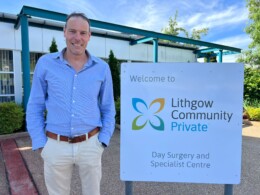A 10-year-old Sydney schoolboy has joined forces with Australian actor Shane Jacobson to urge residents across Greater Sydney to save water as unpredictable weather conditions and a hot summer put pressure on a looming drought.
Following a nation-wide search, Kobi Bartlett, from Sydney’s South, was picked to play a 10-yearold Shane Jacobson in the campaign designed to remind more than five million customers to conserve water.
Kobi was cast in the campaign as the closest possible look alike to a mini Shane Jacobson, complete with a mini beard made out of human hair to match the Aussie actor.
Sydneysiders continue to be some of the biggest water wasters across Australia using.
Fifty-nine per cent more water compared to South East Queensland and 11 per cent more than Perth.
Kobe Bartlett, plays Little Bob – a blast from the past who returns to highlight big Bob’s water wasting habits.
“Getting to play the role alongside Shane Jacobsen was a challenge, and the character of Little Bob was so much fun,” Kobi said.
“What it did do was show me that it’s pretty easy to save water here and there around the house, and it all adds up,” Kobi said.
Greater Sydney customers used 273 litres per person per day compared to South East Queensland, which used 171 litres, and Perth residents, who used around 244 litres per person per day during the 2022-23 financial year.
Australian actor Shane Jacobson said the campaign is a gentle reminder to limit water wastage around the home despite high dam levels.
He said unpredictable weather and predictions of a hot summer could change the landscape around the water supply within weeks.
“The message is water supply is not endless, and the future of water depends on all of us. It’s easy to take water for granted, and we need to start changing our behaviours now,” Mr Jacobson said.
“If we start working together now to make small changes around the home, we will be better prepared for what is to come over the next 12 months,” Mr Jacobson said.
Greater Sydney faces a potential cycle of restrictions in late 2024 and an inevitable drought over the next few years.
Warragamba Dam, which supplies most of Sydney’s drinking water, is sitting at 92 per cent.
Collective dam levels across Greater Sydney are sitting at 88 per cent.
Sydney Water Head of Water Supply and Production, Ben Blayney, said managing Sydney’s water supply through El Nino is a tricky business, and customer awareness is critical to try to shift behaviours and attitudes toward their water use.
“Dam levels are fluctuating and might be high at just over 90 per cent now, but can drop
dramatically during predicted hot weather conditions,” Mr Blayney said.
“We know our customers tend to use more water over summer, but we need to take action now and reduce our water use where possible and not when the dams are empty.
“Even the most minor changes in behaviour can have a considerable impact, and we need
Sydneysiders to work with us to save every precious drop,” Mr Blayney said.
The Bureau of Meteorology’s three-month forecast suggests most of Australia is at least 2.5 times more likely to experience unusually high maximum temperatures while rainfall is predicted to be below average.









